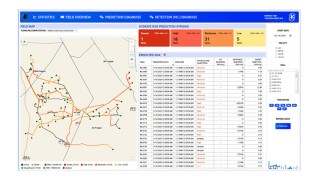Enhanced recovery
This paper describes a study to design and implement an enhanced oil recovery project via a huff ’n’ puff using Y-grade injectant.
Entrepreneurial mindsets with the motivation to explore new materials, not limited to focusing on traditional hydrocarbon gas, CO2, and chemicals such as polymer and surfactant, are becoming more important for broadening prospects beyond the conventional EOR scene.
This paper discusses a comprehensive hybrid approach that combines machine learning with a physics-based risk-prediction model to detect and prevent the formation of hydrates in flowlines and separators.
-
This study presents experimental results on the use of carbon dioxide (CO2) as an enhanced-oil-recovery (EOR) agent in preserved, rotary sidewall reservoir core samples with negligible permeability.
-
Two alkali/surfactant/polymer (ASP) floods became operational in the Taber area of Alberta, Canada, in 2006 and 2008.
-
A successful pilot test of polymer flooding was conducted in the San Jorge Gulf basin.
-
This paper is a detailed examination of Pleistocene-to-Upper-Miocene turbidite reservoirs in the deepwater Gulf of Mexico under water injection.
-
Enhanced-oil-recovery (EOR) methods have been increasingly positioned into the mainstream of project planning these past years as conventional, highly productive, and large reservoirs have become more difficult to find.
-
DuPont is ramping up the commercial-scale implementation of its microbial enhanced oil recovery (MEOR) method after nearly a decade of development and testing of what it says is a low-risk way to improve production from mature fields.
-
After a year of field testing, a new type of biopolymer developed by Wintershall, Germany’s largest oil and gas producer, is showing promise as an effective enhanced oil recovery (EOR) tool in one of the country’s longest producing oil fields.
-
A growing chorus of suppliers, researchers, and service companies is persuading US operators to re-examine their use of slickwater in shale plays and consider displacing it with carbon dioxide and nitrogen.
-
For companies working to maximize production and profits, one of the biggest questions has been, and continues to be, how manyu wells to drill per square mile.
-
Some operators are returning to their North American mature unconventional shale wells to refracture, or restimulate, the rock to accelerate production and enhance ultimate recoveries.













